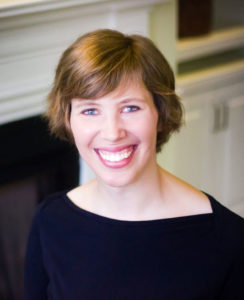 Making Room is a biweekly opinion column. The views expressed are solely the author’s.
Making Room is a biweekly opinion column. The views expressed are solely the author’s.
I grew up in a predominantly white suburb in Minnesota. My family didn’t talk about race, but we had plenty of ways to indicate that black people were not our neighbors. I remember my parents warning me not to cross the river into Minneapolis. Once, after taking the wrong exit into a black neighborhood of Northern Minneapolis, my dad told me to lock the doors as we drove through.
This prejudice didn’t disappear when I moved to deep blue, progressive Arlington. But now I am more aware of the coded language white people use to mark black people as outsiders. I read Nextdoor complaints about people from outside the neighborhood playing basketball in Virginia Highlands Park. I’ve seen posts on DC Urban Moms decrying the school busses that pull up in front of Arlington’s affordable housing buildings. Without ever mentioning race, we can clearly show who is and isn’t welcome in our neighborhoods.
Our impulse to separate ourselves from our black and brown neighbors is deadly. Research from Boston University shows “racial residential segregation was the predominant factor explaining why some cities have greater black-white racial disparities in fatal police shootings — even after controlling for a city’s crime rate, median income, racial composition of its police force, and other factors.”
Now we are mourning the murder of George Floyd, a black man from South Minneapolis, by a police officer who thought he was a threat. The perpetrator, Derek Chauvin, lived in the white suburb of Oakdale. Neither man lived far from where I grew up, but as the New York Times explains, these two neighborhoods are worlds apart. The Twin Cities metropolitan area used to have a region-wide affordable housing mandate and Minneapolis consciously desegregated its schools, but these policies lost white support in the 1980s. Now, the region has one of the largest racial wealth gaps in the country.
In the twenty-first century, Arlington has removed most of the obvious racism from our housing policy. The segregation wall at Hall’s Hill was literally washed away by flooding in 2019. The black neighborhood that was removed to clear land for the Pentagon has a commemorative plaque.
But even without racial covenants or redlining, the consequences of which remain with us, we have plenty of tools to separate white and black families.
Exclusionary zoning — the rules that prevent anything but a detached, single-family home from being built in certain neighborhoods — is the modern form of residential segregation. In Arlington, zoning on 87% of our 26 square miles bans anything except a detached single-family home. Our site plan review process, which is overly deferential to existing homeowners, prevents or delays the creation of new committed affordable housing.
This, but #ArlingtonVA. https://t.co/CEaSqxwBsm
— Jane Fiegen Green (@janefgreen) June 6, 2020
Today, single-family neighborhoods have become gated communities that are accessible only for the wealthiest families, who are disproportionately white. This prevents black families from gaining opportunities and building the wealth that could reduce racial disparities. And when black families do live in these exclusive enclaves, they can be subject to surveillance and police scrutiny.
Residential segregation reinforces segregation in Arlington Public Schools. Jamestown Elementary, which is surrounded by some of the largest residential lots in the county, has fewer than 2% African American students. Dr. Charles E. Drew Elementary, which is in a historically black neighborhood with zoning friendly to multi-family dwellings, has 36% African American students.
Let's be clear: exclusionary zoning is racist. It was racist in origin, and it continues to contribute to segregation in our neighborhoods and schools. https://t.co/4WgnzfV6Mf pic.twitter.com/SVek0Ud7Bu
— Gray 'serial millennial myth debunker' Kimbrough (@graykimbrough) June 3, 2020
As we chant “Black Lives Matter” at demonstrations and post sympathetic messages on social media, we must remember that liberal communities like Arlington are more likely to employ exclusionary zoning than more politically conservative cities and counties. The unwillingness to let black people be our neighbors is part of the same impulse of seeing black people as a threat. When white people see black people as a threat, black people die.
As part of a larger effort to address racial justice, Minneapolis eliminated exclusionary zoning in 2018. The city also expanded its funding for affordable housing and is looking to strengthen tenant protections. If Arlington is serious about racial equity, bold changes to zoning should be on the table, as well as expanded committed affordable housing. Let’s find ways to show Black Lives Matter by welcoming black neighbors.
Jane Fiegen Green, an Arlington resident since 2015, proudly rents an apartment in Pentagon City with her husband and son. By day, she is the Development Director for Greater Greater Washington and by night she tries to navigate the Arlington Way. Opinions here are her own.

